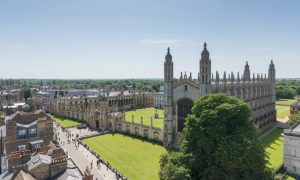Denmark is known for its high benefits, salaries and quality of life, but also for a higher cost of living and tax system that makes manyimmigrantslook forward to it. So.Immigration to DenmarkHow much does it really cost? What is the cost of living? Is the tax pressure really high? And are Denmark's social benefits worth the investment? In this article, we'll take a closer look atImmigration to DenmarkThe true cost, tax situation and benefits systemThis will help you to assess whether it is worth moving to this Nordic country or not!
One,Immigration to DenmarkMain costs
Immigration to DenmarkThe costs vary depending on the type of visa, the city of residence and the individual's lifestyle. Below are the main immigration related fees:
1. Visa and residence permit fees
Fees for different types of visa applications vary and the main visa fees for 2025 are listed below:
| Visa Type | Application fee (DKK/DKK) | Approx. |
|---|---|---|
| Work Visa (Pay Limit Scheme) | 4,405 | 4,500 |
| Positive List Work Visa (Positive List) | 4,405 | 4,500 |
| family reunification visa | 9,750 | 10,000 |
| Application for permanent residence | 6,745 | 7,000 |
| Blue Card | 4,405 | 4,500 |
take note of: Visa fees may be adjusted annually and it is advisable to check the latest policy before applying.
2. Housing costs (rental vs. purchase)
Danish housing prices are high, especially in large cities such as Copenhagen, and there is a big difference between the cost of renting and buying a home.
-
Rental price (per month)::
- Copenhagen City Center: 8,000 - 15,000 DKK (approx. 8,500 - 16,000 RMB)
- Other cities (e.g. Aarhus, Odense): 5,000 - 10,000 DKK (approx. 5,300 - 10,600 RMB)
-
purchase price::
- Copenhagen Apartments: 40,000 - 70,000 DKK/m² (approx. 42,500 - 75,000 RMB/m²)
- Other cities: 25,000 - 45,000 DKK/m² (approx. 26,500 - 48,000 RMB/m²)
Renters are required to pay3 months depositHomebuyers need to considerLoan Rates and Property TaxesThe
3. Cost of living (food, transportation, utilities, etc.)
Prices are high in Denmark, here are some reference prices for major living expenses (in Copenhagen for example):
| Category of expenditure | Average cost (DKK) | Approx. |
|---|---|---|
| Grocery (monthly) | 2,500 – 4,000 | 2,600 – 4,200 |
| Monthly Public Transportation Pass | 750 – 1,200 | 800 – 1,300 |
| Electricity, water and gas (80 square meters apartment) | 1,200 – 2,000 | 1,300 – 2,200 |
| Cellular and network (per month) | 300 – 500 | 320 – 530 |
| Entertainment/dining (1 meal out) | 150 – 300 | 160 – 320 |
Overall, living in Copenhagen, an average immigrant family'sBasic monthly expenses are about 15,000 - 25,000 DKK.(approx. 16,000 - 27,000 RMB).
II. The Danish tax system: is it really high?
Denmark's high tax system is a major concern for many immigrants, but high taxes also mean better social benefits. The following are the main tax categories:
1. Personal income tax
Denmark is practicingprogressive tax rateThe higher the annual income, the higher the tax rate. the latest rates for 2025 are as follows:
| Annual income (DKK) | Income tax rates (including local and national taxes) |
|---|---|
| 0 – 50,000 | 8% – 12% |
| 50,000 – 550,000 | 37% – 42% |
| 550,000 or more | 52% – 55% |
In addition.Some occupations (e.g., IT, healthcare, engineering) may be eligible for low-tax immigration incentivesFor the first three years, the tax rate was only 27%(plus local taxes of about 32%).

2. Value added tax (VAT)
- VAT in Denmark is 25%, which is one of the highest in the world and applies to most goods and services.
- Some essential items (e.g., books, medical supplies) are eligible for the Low tax rate or tax exemptionThe
3. Other taxes
- property tax:: 0.92%-3% per year (depending on property value)
- car tax: The purchase tax on new cars is as high as 85%-150%, so cars in Denmark are very expensive.
III. High welfare in Denmark: is the tax worth it?
Although taxes are high in Denmark, the government provides a very comprehensive social welfare system that includes:
1. Free medical care
All legal residents have access to free medical services, includingVisits, hospitalization, surgery, maternity servicesetc., with no additional health insurance costs.
2. Children's education allowance
- Public schools are free of charge and university education is subsidized by the Government.
- Monthly payment for children under 18 years of age 1,500-4,500 DKK(depending on age and family income)
3. Unemployment benefits
- If you are unemployed after one year of work in Denmark, you can apply for aunemployment benefitUp to 90% of monthly salary(ceiling 23,000 DKK).
4. Old-age pensions
- Denmark has a good pension system and immigrants can receive a government pension if they have lived there for a long time and paid into social security.
Four,Immigration to DenmarkIs it worth it? Summarize the pros and cons
✅ Strengths:
✔️ High-paying careers with a wide range of opportunities (especially in IT, healthcare, engineering)
✔️ Excellent social benefits, healthcare and education free of charge
✔️ High quality of life, beautiful environment, social stability

❌ Disadvantage:
❌ High cost of living and taxes, expensive to rent and buy a home
❌ Shorter daylight hours and colder weather in winter
❌ Danish is difficult, and although English is widespread, some jobs require Danish
Conclusion: Who it's forImmigration to Denmark?
- Highly paid professionals (e.g. IT, doctors, engineers): Higher income, lower tax rate benefit
- Married persons/family migrants: Higher welfare support is available
- (foreign) exchange student: Permanent residence can be obtained by finding a job after graduation.
If you have a stable source of income and are willing to adapt to Denmark's high tax system and lifestyle, immigrating to Denmark would be a good choice!






